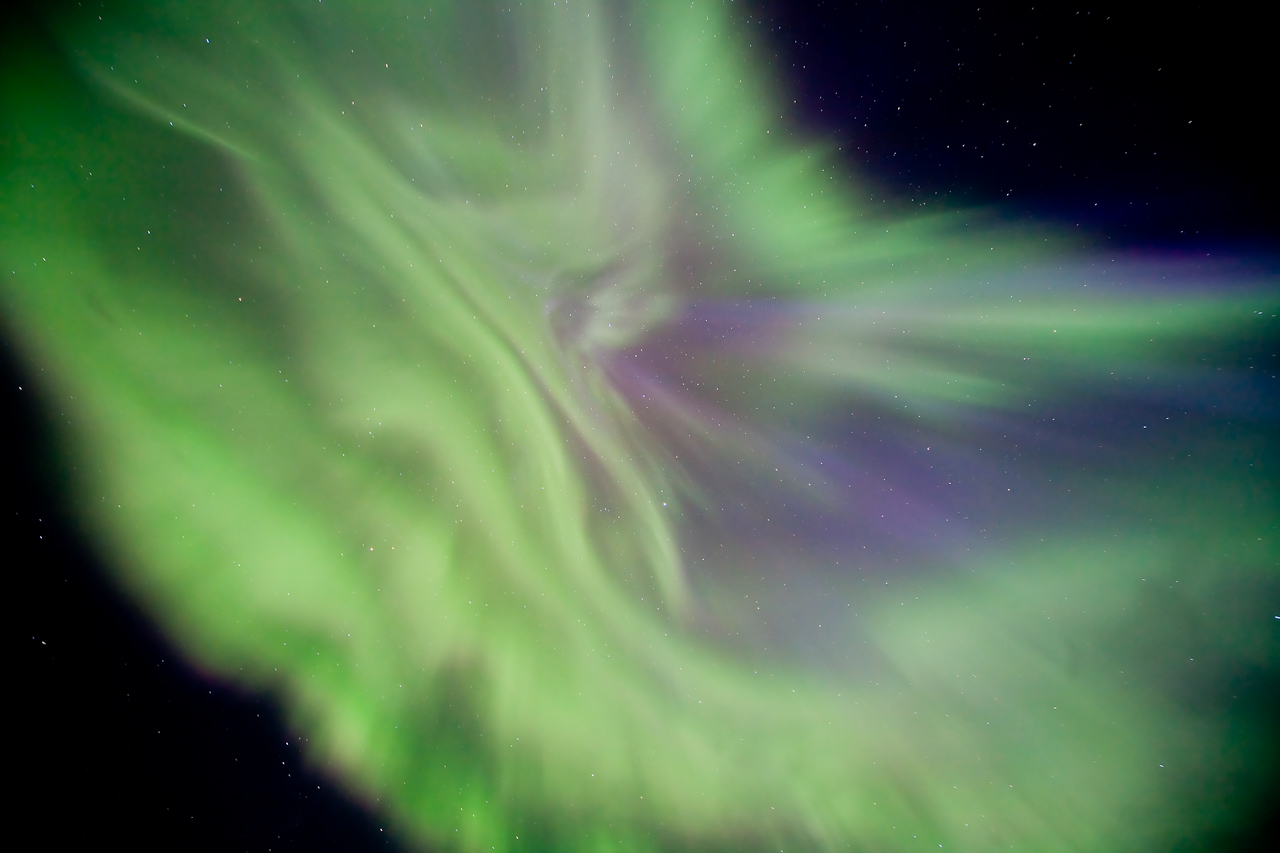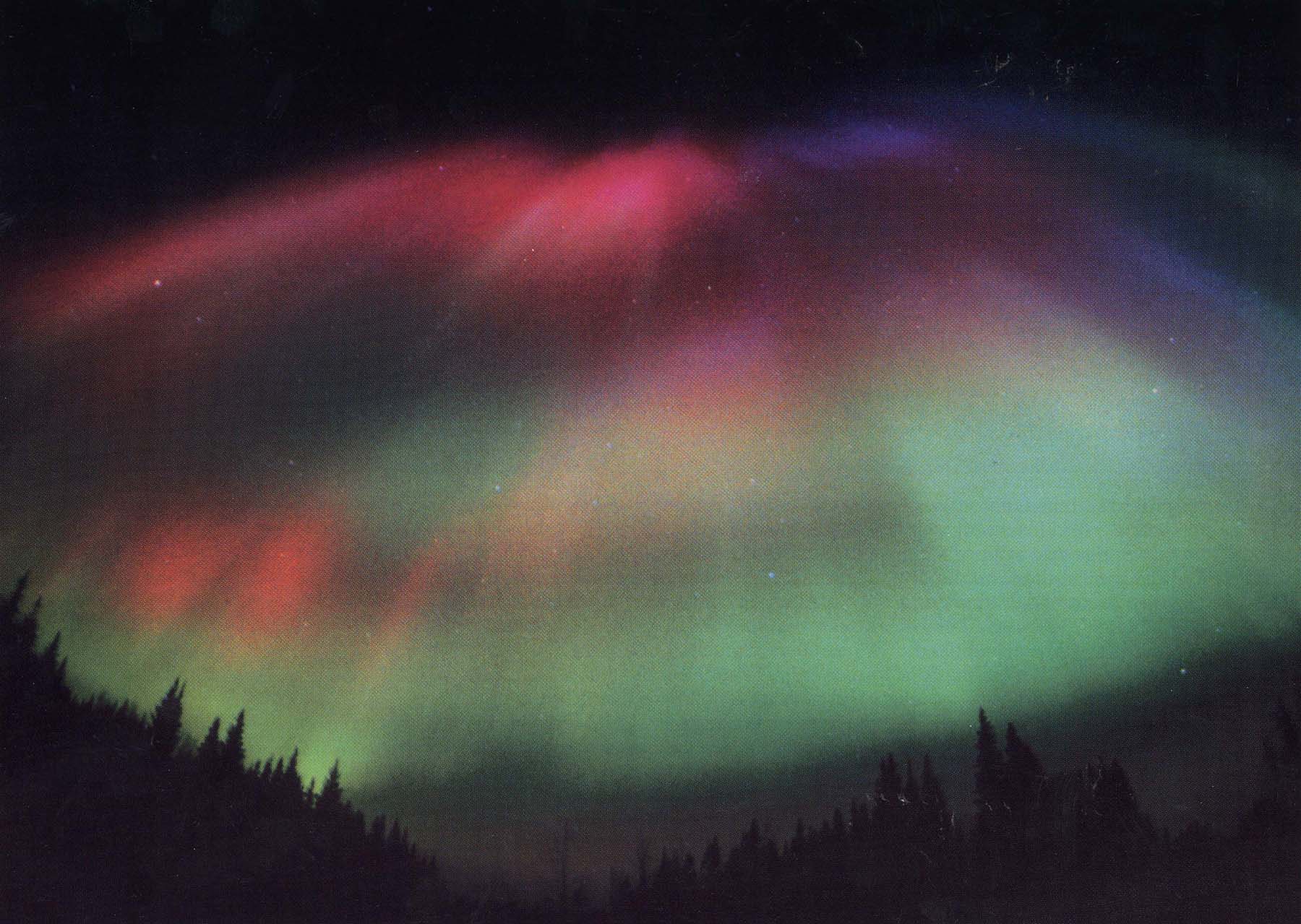Actually, charged particles of the solar wind being funnelled to polar regions by the Earth's magnetic field and colliding with atmosphere, ionizing the molecules and causing the awesome looking glow.
Auroras are a wonderful phenomenon. I have once happened upon a proper corona style aurora, which is basically when the whole sky is lit with them, and forming seemingly infinitely high pillars on the sky:


Nebulas would, in all likelihood, mostly look like somewhat lighter background to the starfield. In some cases, however, the light of the nebula could actually cover the starfield, making it difficult to use stars for navigation.
That would likely be the case in somewhere like the Trifid nebula or other places where stars are born and are heating the gas in the nebula. Or someplace like Eta Carinae, where the gigantic star in the middle is illuminating the planetary nebula it has puffed around itself. Colours, though? Not as bright as the Hubble pictures I'm afraid.
In fact, open and elliptical star clusers like Pleiades, Hyades or Messier 13 might provide fairly fascinating views.
Then there's stuff like Charcoal nebula - being close to it, it would obscure the sky behind it.
Also, the view of Milky Way as seen from Magellanic clouds would likely be breathtaking.

